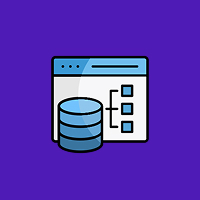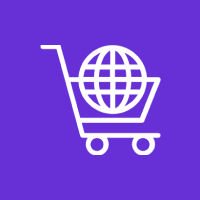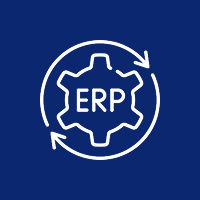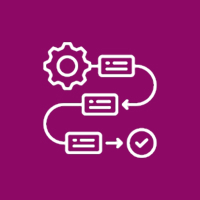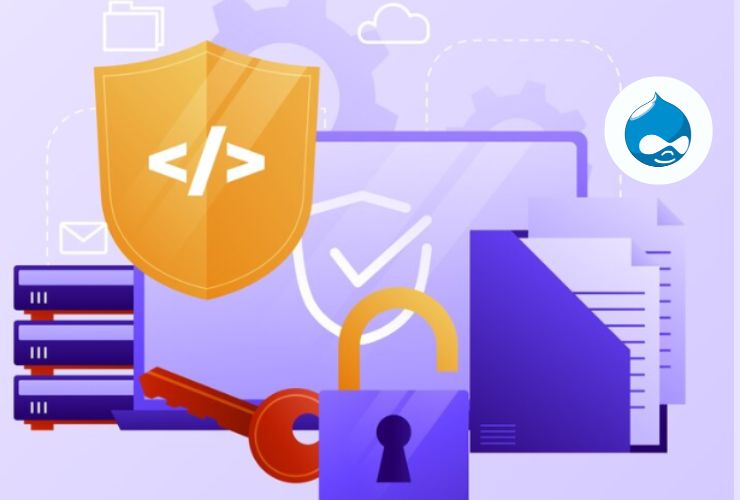Security is the prime concern for enterprise web development, as businesses have to protect sensitive data, financial transactions, and confidential user information. As more and more cyber attacks emerge, companies require a secure framework that ensures robust security mechanisms.
Microsoft’s.NET framework is coded with built-in security features which enable developers to create secure, scalable, and high-performance applications. From securing user authentication and data encryption, API protection, to threat mitigation,.NET provides a set of security features to safeguard enterprise applications against cyber attacks, unauthorized access, and data leakage.
In this blog, we shall explore the security features of.NET that provide enterprise application development with increased security.
1. Integrated Authorization and Authentication
One of the most important components of application security is managing the access of the users.NET integrates a security model that supports diverse authentication and authorization schemes to allow access to the resources only by the relevant users.
Key Features:
- ASP.NET Identity: Provides user login authorization via password hashing, two-factor authentication (2FA), role-based access control (RBAC), and claims-based identity.
- OAuth and OpenID Connect: Supports secure authentication using third-party providers such as Google, Facebook, and Microsoft that implement Single Sign-On (SSO).
- Windows Authentication: Uses Active Directory to authenticate users securely in corporate networks without requesting additional credentials.
- Custom Authentication Providers:.NET allows developers to create custom authentication methods according to enterprise-specific security policies.
Why It Matters:
- Prevents unauthorized access to sensitive systems.
- Provides a flexible authentication system that can be integrated into enterprise security infrastructures.
- Enables smooth user identity management with fewer security risks.
2. Secure Data Encryption
Encryption is required to secure sensitive data, both in transit and at rest.NET provides strong cryptographic libraries that help developers implement secure encryption methods to secure confidential data from unauthorized use.
Key Features:
- AES and RSA Encryption: Offers contemporary encryption algorithms to protect sensitive data.
- SSL/TLS Implementation: Secures communication between servers and clients, keeping eavesdropping and data interception at bay.
- Data Protection API (DPAPI): Protects stored configuration data, like database connection strings and API keys, from being accessed by unauthorized users.
- Field-Level Encryption: .NET allows for encrypting single database fields to add an extra layer of security for personally identifiable information (PII).
Why It Matters:
- Protect confidential business data from unauthorized users’ access.
- Aids in compliance with industry standards such as GDPR, HIPAA, and PCI-DSS.
- Simplifies the vulnerability to data breaches and cyber attacks.
3. Protect APIs with Token-Based Authentication
Enterprise applications usually utilize APIs to share information between various systems, and therefore, API security becomes a critical issue in web development .NET offers native facilities to secure APIs from misuse and attacks.
Key Features:
- JSON Web Token (JWT) Authentication: Offers a secure means of handling API authentication without having to store sensitive credentials.
- OAuth2 and API Key Authentication: Limits the access to APIs for authorized and authenticated users only.
- Rate Limiting and Throttling: Prevents API abuse by limiting the quantity of requests an application or user may send within a short time.
- CORS (Cross-Origin Resource Sharing) Policies: Averts unauthorized web applications from requesting APIs located on other domains.
Why It Matters:
- Protects API endpoints from abuse by malicious users.
- Secures the communication between different applications and services.
- Guarantees a managed and authenticated access mechanism for data exchange of enterprises.
4. Threat Detection and Mitigation
Enterprise applications must be secure against cyber threats, such as SQL injection, cross-site scripting (XSS), and cross-site request forgery (CSRF).NET includes advanced security features to identify and neutralize threats.
Important Features:
- Anti-CSRF Tokens: Prevent attackers from executing unauthorized commands on behalf of logged-in users.
- Input Validation and Output Encoding: It guards against SQL injection and XSS attacks by proper input validation of the user.
- Threat Detection with Microsoft Defender for Cloud: It detects and identifies security threats in real time and warns administrators of possible threats.
- Automatic Patching and Security Updates: Security patches for .NET are published by Microsoft on a regular cycle, making it less likely to be exploited.
Why It Matters:
- Reduces the vulnerability of general security threats.
- Helps keep web applications secure from automated bot-based attacks and malware.
- Improves enterprise security by actively detecting threats.
5. Role-Based and Claims-Based Security
Successful access management provides the user with access to only the resources that he needs for work.NET supports role-based and claims-based authentication capabilities to achieve better security.
Key Features:
- Role-Based Access Control (RBAC): Provides permissions to the user in the form of predefined roles like admin, manager, or user.
- Claims-Based Authentication: Provides access based on certain attributes (claims) of the user, providing more refined security policies.
- Azure Active Directory (Azure AD) Integration: This offers enterprise-class identity and access management, enabling secure authentication to any number of applications.
Why It Matters:
- Minimizes privilege escalation and unauthorized access threat.
- Makes managing large-scale enterprise security easy.
- Guarantees users possess no more than the minimum privilege necessary to accomplish their task.
6. .NET Secure Coding Practices
Secure coding is an anticipatory approach to vulnerability reduction during the development process.NET provides intrinsic tools and best practices for secure code development.
Best Practices:
- Use Parameterized Queries: Avoids SQL injection attacks by escaping user data.
- Secure Error Handling: Avoids exposing sensitive system information in error messages.
- Input Validation and Data Sanitization: Avoids malicious scripts and malformed input from causing security disruptions.
- Enforce the Principle of Least Privilege: Restricts user privilege to the bare minimum needed.
Why It Matters:
- Decreases the likelihood of security risks in application code.
- Supports developers in complying with industry best practices in secure development.
- Supports compliance with security regulations such as OWASP.
7. Logging and Security Auditing
You need to monitor the application activity to detect security incidents and manage potential threats. .NET supports comprehensive logging and security auditing features.
Top Features
- ASP.NET Core Logging Framework: Catches security occurrences and records them for inspection.
- Application Insights & Microsoft Sentinel: Provides real-time security monitoring and notification.
- Audit Trails: Records user activity, including login attempts, access to data, and modifications, for regulatory and forensic audits.
Why It Matters:
- Facilitates real-time threat detection and response.
- Ensures compliance with industry standards such as SOC 2 and ISO 27001.
- Provides visibility into application security incidents for proactive risk management.
Conclusion
The.NET framework also possesses an end-to-end security model that guards business applications against future cyber attacks. From authentication and encryption to security for APIs as well as detecting threats,.NET provides a primary set of security features ensuring data integrity, regulatory compliance, and a safe user experience.
For businesses eager to develop safe and scalable web applications,.NET becomes an authentic and security-centric framework.
If you need expert.NET development services to enhance the security of your application, we can help. Contact us today to know more about your project!
Contact Us Today
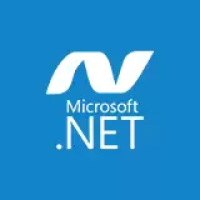












 Database Development
Database Development








